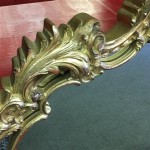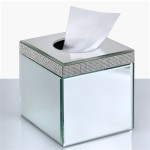Adhesive for Mirrors
Mirrors add a touch of elegance and functionality to any space, from bathrooms and bedrooms to living rooms and hallways. Proper installation is crucial for safety and longevity, and choosing the right adhesive plays a vital role. This article explores the various aspects of adhesives specifically designed for mounting mirrors, offering insights into their properties, applications, and best practices.
Types of Mirror Adhesives
The market offers a range of adhesives formulated for mirror installation, each with its own set of advantages and disadvantages. Understanding these differences is essential for selecting the appropriate adhesive for a specific project.
Neutral-cure silicone sealants: These are a popular choice due to their strong bonding capabilities, flexibility, and resistance to moisture. Neutral-cure silicones are suitable for various surfaces, including glass, tile, and metal. Their flexibility allows for minor movements and vibrations, preventing stress cracks in the mirror. They are also often mildew-resistant, making them ideal for high-humidity environments like bathrooms.
Construction adhesives: Certain construction adhesives are specifically formulated for mirror mounting. These adhesives typically offer high initial grab and strong bonding strength. They are often used for heavier mirrors and can adhere to a wider range of substrates, including wood and concrete. It's crucial to ensure the chosen construction adhesive is compatible with mirrors and doesn't contain solvents that could damage the mirror backing.
Double-sided mirror tape: This option provides a convenient and relatively quick installation method, particularly for lighter mirrors. Double-sided mirror tape is generally less messy than liquid adhesives and offers immediate bonding. However, it may not be suitable for heavy mirrors or applications subject to significant temperature fluctuations.
Specialized mirror mastics: These adhesives are specifically engineered for mirror mounting, offering a combination of high strength, moisture resistance, and non-corrosive properties. Mirror mastics are designed to prevent damage to the mirror backing and provide a secure, long-lasting bond.
Surface Preparation
Proper surface preparation is paramount for achieving a strong and lasting bond. Regardless of the adhesive chosen, the surfaces to be bonded must be clean, dry, and free of dust, grease, and other contaminants. Cleaning with isopropyl alcohol is often recommended. For porous surfaces like wood, applying a primer may be necessary to ensure proper adhesion.
Application Techniques
The application method varies depending on the chosen adhesive. Liquid adhesives, such as silicone and construction adhesive, are typically applied in beads or dots to the back of the mirror. For double-sided tape, the backing is peeled off and the tape is applied to the mirror before pressing it onto the wall. Following the manufacturer's instructions is critical for achieving optimal results.
Safety Considerations
Safety should always be a primary concern when working with adhesives and mirrors. Adequate ventilation is essential, especially when using solvent-based adhesives. Wearing gloves and eye protection is recommended to prevent skin and eye irritation. Heavy mirrors should be supported during installation to prevent slippage and potential injury.
Factors Affecting Adhesive Choice
Several factors influence the selection of the appropriate mirror adhesive. The weight and size of the mirror are key considerations, as heavier mirrors require stronger adhesives. The type of substrate also plays a role, as different adhesives are formulated for different surfaces. Environmental factors, such as temperature and humidity, should also be taken into account, especially in bathrooms or other areas prone to moisture.
Troubleshooting Common Issues
Occasionally, issues may arise during or after mirror installation. One common problem is the mirror slipping before the adhesive sets. This can be prevented by using temporary supports or applying the adhesive in a way that provides immediate grip. Another issue is adhesive failure, which can be caused by improper surface preparation, using the wrong adhesive, or exceeding the adhesive’s weight capacity. Addressing these potential problems proactively can ensure a successful and long-lasting mirror installation.
Choosing the Right Adhesive for the Job
Selecting the appropriate adhesive for a mirror installation involves careful consideration of various factors. Consulting the manufacturer's specifications and seeking professional advice when needed can help ensure a secure and successful outcome. The right adhesive will provide a strong, durable bond, maintaining the integrity of the mirror and ensuring its safe and long-lasting placement.

Loctite Pl 530 Mirror Marble And Granite 10 Oz Solvent Construction Adhesive Tan Cartridge Each 1693636 The Home Depot

Liquid Nails White Latex Interior Construction Adhesive 10 Fl Oz In The Department At Com

Loctite Pl 530 Mirror Marble And Granite 10 Oz Solvent Construction Adhesive Tan Cartridge Each 1693636 The Home Depot

Apel Mg700 Mirror Adhesive 100 Silicone Fast Curing Construction Usa

Permatex Extreme Rearview Mirror Professional Strength Adhesive

Loctite Pl 530 Mirror Marble And Granite 10 Oz Solvent Construction Adhesive Tan Cartridge Each 1693636 The Home Depot

Permatex Rearview Mirror Adhesive Kit
What Is The Best To Use Glue Mirrors A Wall Quora

Americanflat Adhesive Mirror Tiles L And Stick Mirrors For Wall Frameless Round Bedroom Living Room Décor Target

Janyun 4 Pack Self Adhesive Acrylic Mirror 8 X Inch Flexible Tiles Small Mirrors Sheets Wall Stickers Com








